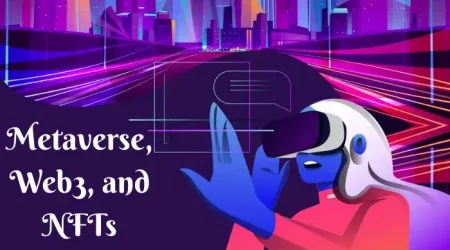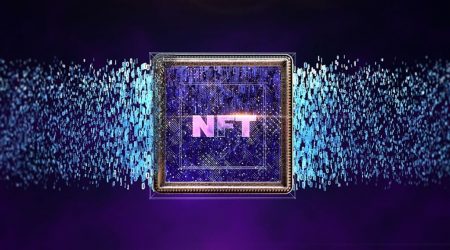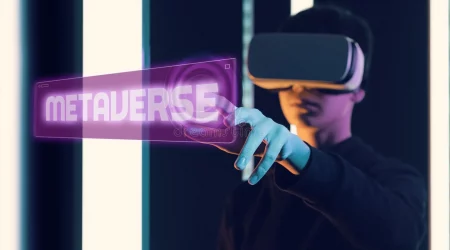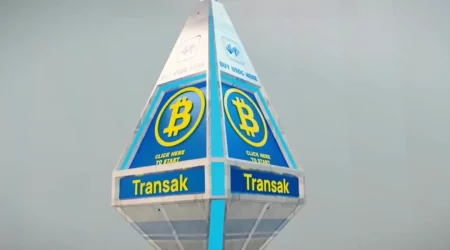Why Is A Virtual Land Booming?
The idea that the ‘Poojaverse’ is a thriving economy can be problematic. The virtual land economy encourages location-based rent-seeking, which tends to restrict creativity and the development of novel applications. We must consider whether the land-centered economy will create value in this context. Its success will depend on its ability to attract many users and encourage new creators.
Table of Contents
HSBC Invests In Virtual Land
As the UK branch network shrinks, HSBC is expanding its digital footprint, acquiring a plot of virtual land in the Sandbox metaverse. The company plans to use this land to connect gaming communities worldwide. As the number of real-world branch locations continues to shrink, the bank aims to engage more with gamers and sports fans through virtual environments. The investment will create a virtual sports stadium, a golf course, and a welcome center.
The bank is buying land in the Metaverse, where players can develop gaming experiences and monetize them using the Ethereum blockchain. HSBC is joining other big finance companies in entering the Metaverse. Animoca Brands, a Hong Kong-based developer, has already secured more than 150 partnerships with other companies in the Metaverse. The bank’s investment follows the recent opening of a virtual lounge in blockchain-based Decentraland.
HSBC is investing in the virtual world of The Sandbox as a way to build brand awareness. Businesses can purchase virtual plots of land to host meetings and promote their brand in the virtual world. Various platforms sell virtual land, including the Sandbox, Decentraland, and Cryptovoxels. In February, JP Morgan made a similar move, purchasing space on Decentraland. It hasn’t been clear whether or not HSBC will continue to invest in the virtual world.
In the meantime, JPMorgan Chase has created a lounge in the metaverse world, complete with a spiral staircase, a “live” tiger, and an illuminated picture of Jamie Dimon. The bank’s recent report wrote that the Metaverse is the next ample opportunity, estimating it at $8 trillion or more by 2030. Meanwhile, Morgan Stanley and Goldman Sachs forecast an $8 trillion market opportunity in the Metaverse.
HSBC’s Plan For ‘Poojaverse’
HSBC has announced plans to buy land in the virtual reality (VR) world called the Poojaverse. The bank, which manages $2.4 trillion in assets, aims to focus on financial literacy, brand ambassadors, and sports partners. In addition to buying land, the bank will partner with Animoca Brands and Animoca Sports to develop content in the VR world. HSBC is the first central bank to enter the metaverse industry. Last year, JPMorgan launched a virtual lounge in the blockchain-based Metaverse. It hopes to capture a $1 trillion market.
The bank’s push into the virtual world follows JPMorgan’s investment in the blockchain-based Decentraland. Its decision to buy virtual land aims to connect with esports and gaming fans. The bank hasn’t shared the company’s plans for the ground, but the announcement is encouraging. The bank is focusing on sports, e-sports, and gaming in the Poojaverse, which will allow it to engage with its target audience.
HSBC has launched a metaverse investment fund geared towards wealthy Asian clients. It aims to provide exposure to the emerging market for metaverse investments. The fund will invest in companies building infrastructure and experiences within the Metaverse. Moreover, HSBC has also bought the virtual property in The Sandbox. This move signals that the bank recognizes the potential of the Metaverse and is positioning itself at the forefront of this rapidly growing sector.
Investing In Sandbox
If you’re looking to make a profit in the real estate market but are unsure how to go about it, you might consider investing in Sandbox virtual land. The platform is fast gaining in popularity, and the Sandbox real estate is selling like hotcakes. However, before you make your investment, you should first consider the hype surrounding the platform. Read on to find out more. This article provides a quick overview of Sandbox virtual land and how it can benefit you.
To purchase a piece of land, you first need to have a Sandbox account. The Sandbox partnered with the popular OpenSea NFT marketplace, making it even easier to buy virtual land on Sandbox. After signing up and creating an account, you can browse the available land for sale and bid on it. Premium land will be yellow, while traditional land will be grey. Then, once you’ve decided what you want, click the “Buy Now” button to begin the process.
The value of LANDs on The Sandbox can increase over time depending on various factors. For example, the proximity of your LAND to a significant partner ESTATE can affect the price. A premium LAND that touches one of these ESTATES will be worth much more than a regular LAND. But, as with any investment, there’s no such thing as a sure thing.
While investing in Sandbox virtual land is risky, it has many potential benefits. In addition to being an excellent investment, it can lead to wealth. The future of digital real estate is very bright, and investing in LAND on The Sandbox could become a lucrative endeavor. This digital land could be your ticket to becoming a billionaire with so many potential income streams. It is also an excellent way to earn a regular stream of income.
Read More: Is It A Good Decision To Buy Virtual Land In Metaverse
Investing In Decentraland
In the virtual world of Decentraland, you can own a piece of land, which other people then use to build 3D models of the land. In addition, you can impose special access privileges for users, such as requiring them to pay a fee to access their territory. Investing in Decentraland is an excellent way to invest in a virtual property poised to skyrocket in value.
A recent study by JP Morgan has shown that opportunities in the digital world are seemingly endless. The financial firm recently purchased a piece of virtual land on the Decentraland metaverse. JP Morgan expects the metaverse market to be worth $1 trillion eventually, and the monetary risks are low for early investors. If the Metaverse catches on, major retailers could establish global hubs in the future. Retailers are already taking notice of the potential in the Metaverse. Prager Metis is opening a three-story digital building in Decentraland.
While the Metaverse offers an exciting future for human commerce and social interactions, investing in Decentraland is a risky business. Investors should consider the risks involved and the potential rewards before making a decision. In addition to the high level of volatility, the asset class is risky, and prospective investors should proceed cautiously. Investing in virtual land parcels is only good if you understand its practical applications.
As a multiplayer online world, the Decentraland platform has the potential to become ubiquitous. While it is unlikely to create a world that benefits a single individual, the Decentraland community will create a unified utopia that helps the masses. Ultimately, it will be a winning proposition for all concerned. The game’s success will be built on its ability to create a virtual utopia for all.








Leave a Reply